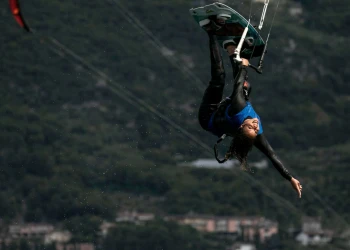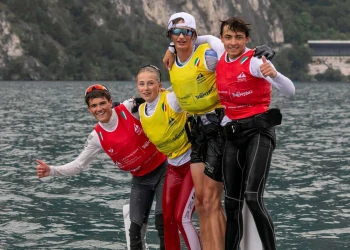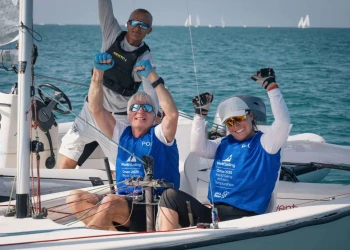
Yuki Hagiwara, Para World Sailing Committee
Yuki Hagiwara, Para World Sailing Committee
In Asia, we more often than not refer to ‘Para Sailing’ as ‘inclusive sailing’. The Hansa is one of the most popular classes for Para Sailing with over 3,000 boats distributed in 41 countries around the world.
The Hansa is designed to offer sailing to everyone regardless of ability, age, gender and financial status. Across the region, para sailing began as a grassroots sport supported by a network of volunteers which, in turn, evolved into local non-profit organisations called “Sailability” throughout Asia.
In Japan, it started in 1999 and expanded with its philosophy of “Sailing for Everyone” supported by more than 20 local groups nationwide, whose families and staffers have devoted themselves to organising safe and enjoyable sailing events for sailors.
It’s unique to Hansa that sailors with or without disabilities compete in the same race and often the winner with the biggest smile is a person with the most serious disability. As of December 2021, 323 boats are located in Japan providing sailing opportunities for anyone with or without disabilities.
“It completely changed my life,” said Takumi Niwa, a 27-year-old Japanese sailor who was already an active sailor lost his leg in an accident, but this didn’t deter him and in 2015, competed in his first international championship wearing a prosthetic leg at 19 years old. “I used to think my disability was something inferior and to hide, but the sailors there were all respected and proud of their own individualities,” he said. Takumi won Bronze in the Hansa Class World Championship and Gold at the South East Asian Para Sailing Championship in 2018. He is aiming for another win at the forthcoming Asia-Pacific Championships in October this year.
In Hong Kong, Sailability was founded in 2009 and more than 6,000 people with a disability or other challenges in life have participated in the programme. It now has a fleet of 20 Hansa boats and nine 2.4mR boats, with plans to add a Solaris 40 yacht to enhance skills and opportunities racing on a larger, fully crewed boat and widening the sphere of inclusion by competing at local yacht regattas open to both able-bodied sailors and para sailors. The organisation operates with around 150 volunteers and most of the funding comes from corporate organisations whose employees are participating in the Sailability programme.
One of the challenges in the region is to involve children and parents from across the social spectrum, as sailing can be perceived as costly. “Education is a big key to change the mindset,” said Key Rawbone, co-founder & CEO of Sailability Hong Kong. “We need to make it economically accessible for everyone.” She is expecting 3,200 sailors and 1,500 volunteers to participate in the programme this year.
Para Sailing in Asia may not be as visible as it is in Europe since it began as a grassroots sport, but sailors here are competitive. Sailors from Hong Kong won Bronze at the 2.4mR class at the 2014 Asian Para Games. Two Malaysian sailors took Gold and Silver and a Singaporean sailor won Gold in the Hansa 303. In Thailand now, people with disabilities are sailing at the weekends using the SV14 boat.
It is unfortunate that the pandemic has prevented any cross-border competition. However, the need for inclusive sailing is boosted by global efforts towards a more inclusive society and we see evidence of corporate organisations using inclusive sailing for its team building opportunities. Our sailors are ready for more action once the restrictions end and fully support the #BacktheBid campaign to see sailing reinstated at the 2028 Paralympic Games in Los Angeles, USA, the pinnacle of global sport.







